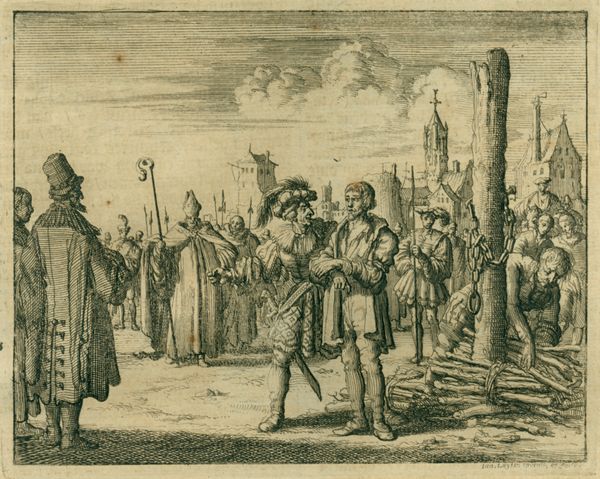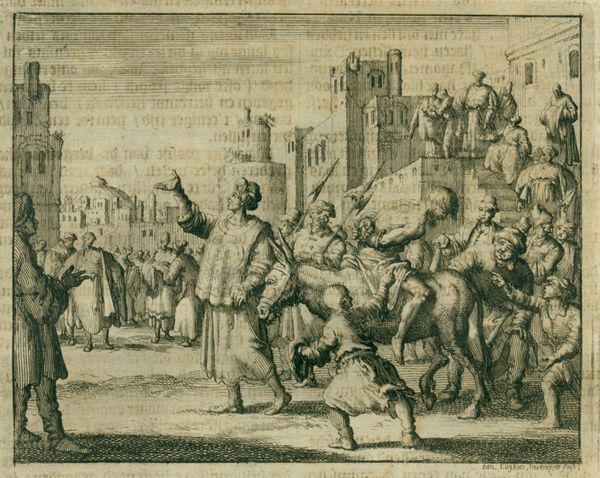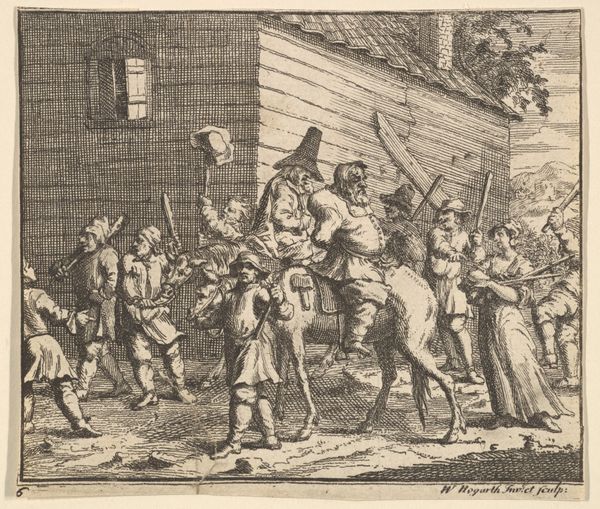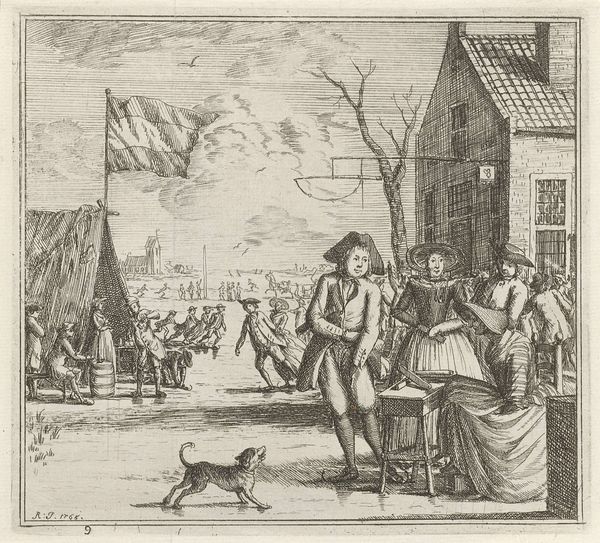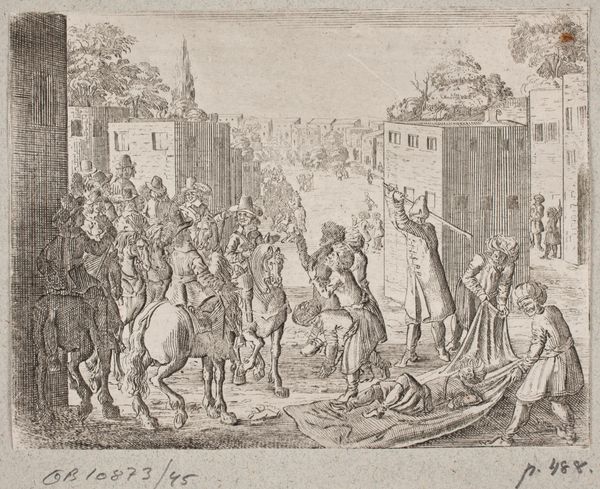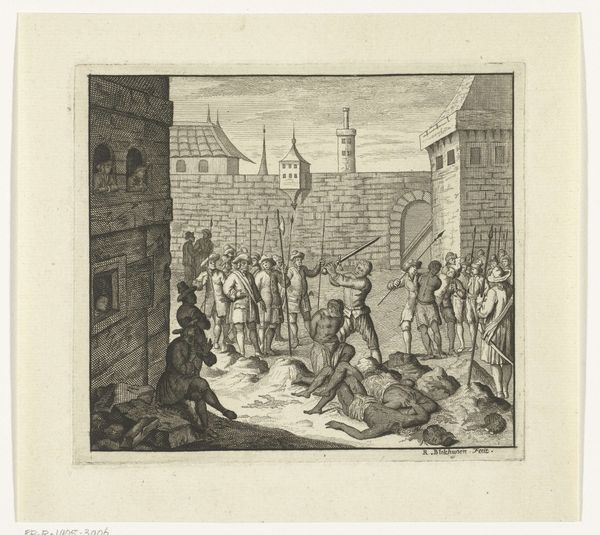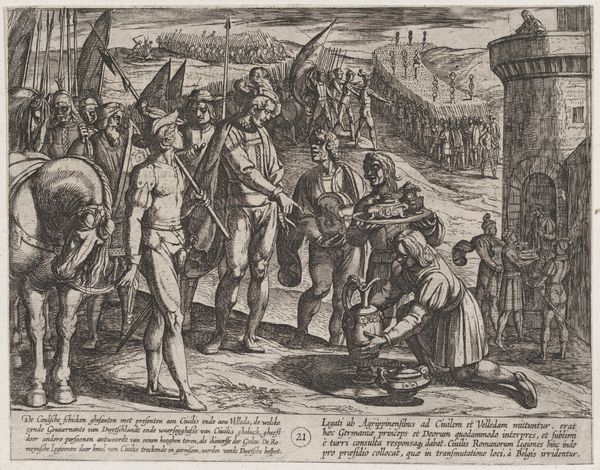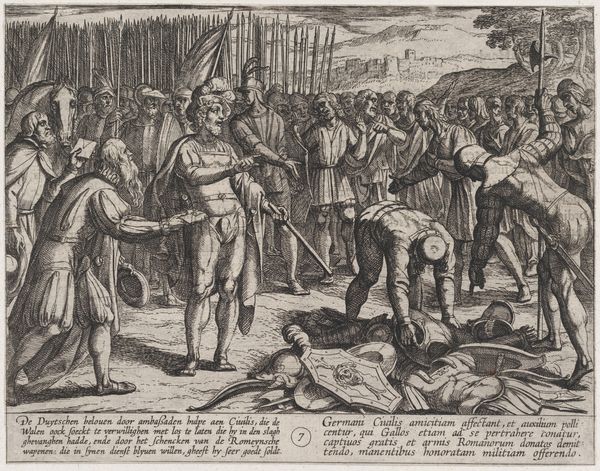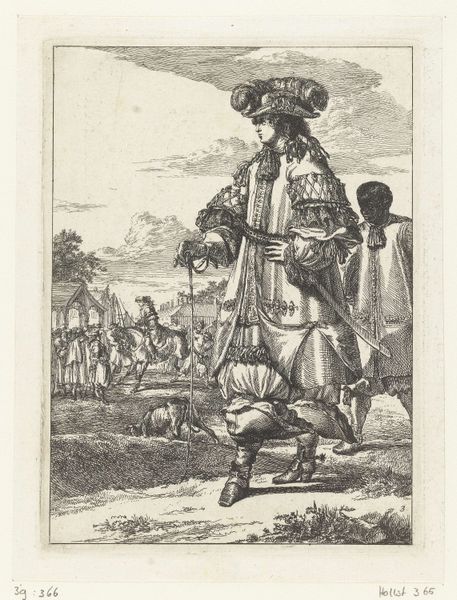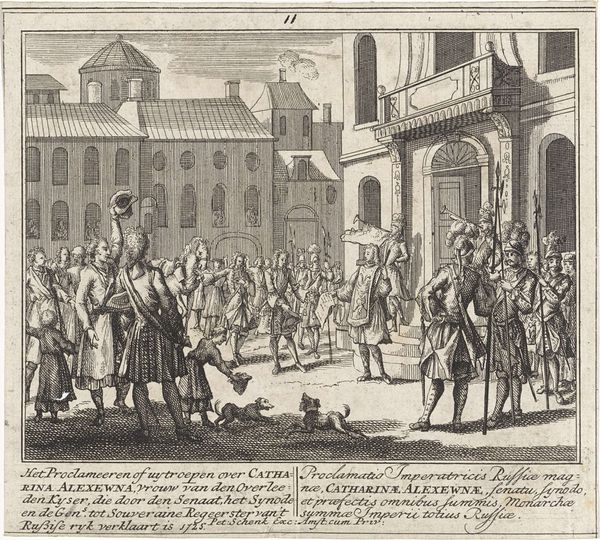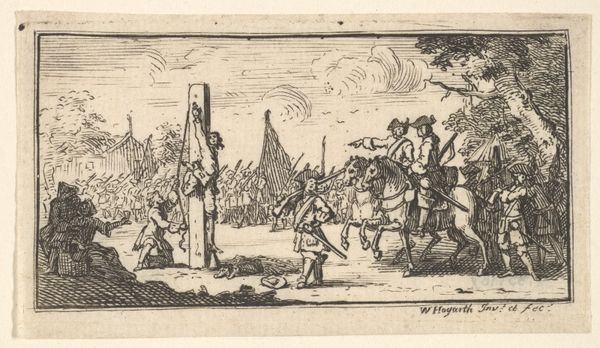
Cutting Off the Nose (Modern Military Punishments) 1720 - 1779
0:00
0:00
drawing, print, engraving
#
drawing
#
narrative-art
#
baroque
# print
#
dog
#
men
#
genre-painting
#
history-painting
#
engraving
Dimensions: sheet: 1 3/4 x 3 1/16 in. (4.4 x 7.7 cm)
Copyright: Public Domain
Curator: This engraving is titled "Cutting Off the Nose (Modern Military Punishments)" by William Hogarth, created sometime between 1720 and 1779. Editor: Gosh, it's a bleak scene. Brutal. It almost feels… detached. Look at the surgical precision amid all that public display of military pomp. Horrifying! Curator: Indeed. Hogarth was often deeply critical of the social structures of his time. This print functions as a direct commentary on the cruelty and barbarity inherent within military discipline, especially its punitive measures. The very act is so shocking that the clean lines create an intense horror, don't you think? Editor: Absolutely. The starkness amplifies the obscenity. And is that a castle, a fortification in the background, with what appears to be ships? Hogarth places this cruelty in the broader scope of authority. I'd venture the castle implies imprisonment, which juxtaposes incredibly with what is playing out right here in the foreground. Curator: Precisely. Note the onlookers; an entire assembly observing what is happening. Military personnel present almost as if for instruction or as simple spectators. This wasn't a hidden practice, but part of the public role of armies then. Editor: You're right; the theatricality of the event really stands out. The figures around the punishment evoke such strong feelings, so dehumanizing. Hogarth gives everyone in the engraving so much emotion to be felt and observed. And this seemingly sweet dog happily going through the scene? An eerie counterpart to human cruelty. Curator: Hogarth's technique creates this contrast intentionally, a stark reminder that even in the face of sanctioned brutality, life—and dogs—continue their business. Editor: Overall, to me, it just communicates… desensitization, doesn't it? Which perhaps speaks loudest. What about to you? Curator: For me, it serves as a lasting reminder of the moral complexities present in structures of power. We really owe Hogarth a debt for his visual history.
Comments
No comments
Be the first to comment and join the conversation on the ultimate creative platform.
